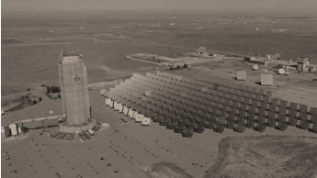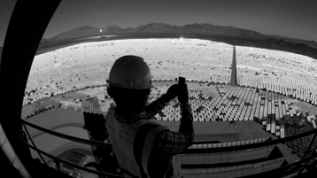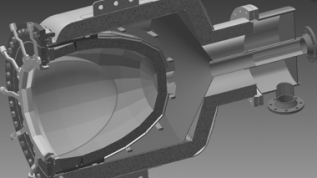Solar Thermal Energy Laboratory - Openings
We are always looking for qualified people interested in joining our group. If you are interested in the research at the Solar Thermal Energy Laboratory, please feel free to contact the laboratory director, Dr. Justin Lapp. No matter what your background or interest, your inquiry will be answered and you will be notified if there may be potential openings in the future.
Openings for PhD Students
Dr. Lapp is seeking motivated Ph.D. students to work in the area of thermal analysis and heat transfer modeling for solar thermal energy. Students will work within a group focused on simulating, designing, and testing new devices and processes to apply concentrated solar energy to industrial applications. Students will work cooperatively with others, and have the chance to work on both computational and experimental components of a single project. Experimental possibilities will be both at UMaine and at other institutions. Dr.
Lapp is currently seeking Ph.D. students for two specific projects.
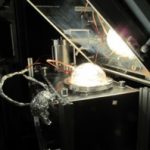
- Numerical heat transfer modeling and experimental validation of a new design of concentrated solar power (CSP) particle receiver. The student will develop a complex heat transfer simulation which can evaluate the output temperatures and efficiency of a device in which particles are heated by direct solar radiation to temperatures up to 1400°C. The simulation will then be used to optimize the design of the device and evaluate the potential of a large scale version. The student will also be able to perform experiments in the lab to heat particles under radiation in order to determine thermal properties of particle beds and validate the simulation. A good heat transfer and computational background is required.
- Thermal process modeling and reactor design for high-efficiency air separation. Producing ammonia for fertilizer requires at least 2% of all the energy than humans consume. Removing oxygen from air to produce nitrogen is a large fraction of this energy. It may be possible to do this more efficiently than current cryogenic separation by combining pressure-swing-absorption for initial purification with solar driven thermochemical separation for final purification. The student will develop a process simulation which can predict and optimize the efficiency of such a process. In addition, the student will investigate solar thermally powered reactor designs to implement the thermochemical part of the process, both computationally and experimentally.
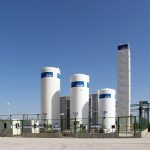
Openings for Undergraduates
Dr. Lapp is currently seeking one or more undergraduate students to gain valuable research experience during the 2019 summer and 2019-2020 school year. Students will work setting up and testing hardware within the laboratory, and assisting in running experiments. Please contact Dr. Lapp if you are interested.
Openings for M.S. Students
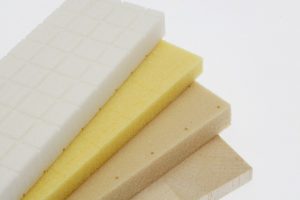
- The Solar Thermal Energy Laboratory, run by Dr. Justin Lapp, is looking for one M.S. student to study numerical modeling of a thermoplastic composite fabrication process. Thermoplastic composites are high-strength, lightweight materials which can be formed to almost any shape. As these materials exhibit their best strength when manufactured in contiguous pieces, research is underway to form very large and complete components as one piece of thermoplastic composite.
The thermoplastic material must be formed within a specific temperature range, but heating a large piece of material uniformly is challenging, expensive, and energy intensive. Non-uniform heating may lead to lowered strength of the part. Understanding the temperature distribution within thermoplastic composites during forming and curing could lead to elimination of bottlenecks for producing larger thermoplastic composite materials and could lead to better production if the forming and curing time can be minimized by active thermal management. This project will include building a numerical heat transfer simulation of a thermoplastic composite undergoing forming and curing. The work will require multi-physics analysis to account for the conductive heat transfer in the material, the external transfer by convection, means of heating, energy of chemical reactions in the material, and potentially thermal stresses and deformation of the material. A strong heat transfer background and numerical analysis experience are required. Only U.S. Citizens or Permanent Residents may apply for this position.
-
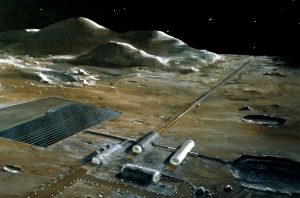 The Solar Thermal Energy Laboratory, run by Dr. Justin Lapp, is looking for one M.S. student to investigate a new process for producing oxygen and construction materials from lunar soil using concentrated sunlight to provide the energy. When lunar soil is heated to 900C under a hydrogen atmosphere, it will react to form water. This water can then be split to recover the hydrogen and the oxygen is collected. This is an oxygen extraction process which may be used for rocket fuel or breathable oxygen on the lunar surface.
The Solar Thermal Energy Laboratory, run by Dr. Justin Lapp, is looking for one M.S. student to investigate a new process for producing oxygen and construction materials from lunar soil using concentrated sunlight to provide the energy. When lunar soil is heated to 900C under a hydrogen atmosphere, it will react to form water. This water can then be split to recover the hydrogen and the oxygen is collected. This is an oxygen extraction process which may be used for rocket fuel or breathable oxygen on the lunar surface.
Dr. Lapp plans to explore combining the oxygen extraction process with a sintering process which turns the lunar soil into solid bricks which can be used to construct structures on the lunar surface. This project will involve a conceptual design of a reactor system to operate this process, a thermodynamic analysis of the reactor, and exploratory experiments of solar-driven sintering of lunar soil (using a simulated soil). A strong thermodynamic and heat transfer background is required. Teamwork skills are necessary. This position is open to all applicants.

